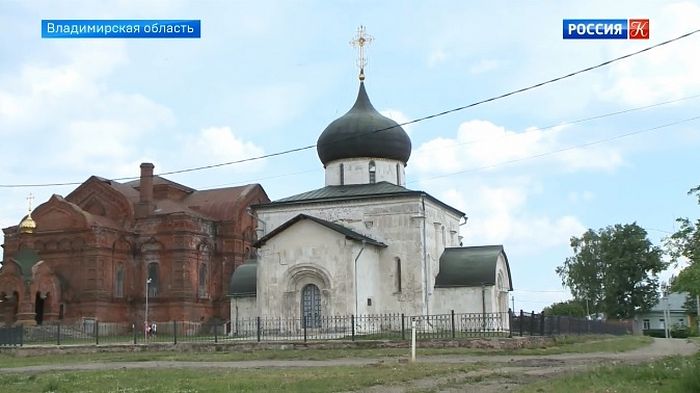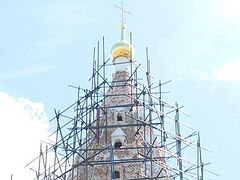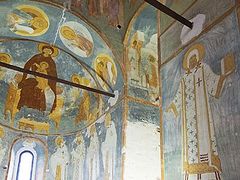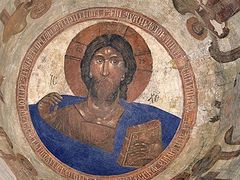Yuryev-Polsky, July 4, 2019
Saint George’s Cathedral in the medieval town of Yuryev-Polsky of the Vladimir province is about to undergo major restoration, reports Pravoslavie.ru. Saint George’s Cathedral is famously the last extant stone structure built before the Mongol invasion period, constructed between 1230 to 1234.
Time has been working against the magnificent cathedral and its one-of-a-kind stone carvings, as the entire stricture is covered in cracks, and is slowly eroding away. Svetlana Borisova, a local museum director, suggested that ground water is the source of the damage, as the white stone absorbs magnesium sulfate, and magnesium salts, which erode the stone from the inside out.
This period and style of stone Rus’ architecture is immortalized in historiography as the Vladimir-Suzdal White Stone Churches, which later, especially Dormition Cathedral in Vladimir, served as the inspiration for Dormition Cathedral inside the Moscow Kremlin. We discussed these similarities and inspiration in the article “The Door Passes Through a Door” A Photo Essay of Dormition Holy Sites”.
There are few structures in Rus’ that survived the Mongol Invasion, almost all of them being churches. The majority are in Novgorod the Great, then Vladimir-Suzdal, followed by Kiev and Chernigov.
It is very rare, however, to find a church which was not heavily altered, or partially rebuilt; the roof and dome of Saint George’s Cathedral, for example, had to be restored in the 15th century after they collapsed.
The cathedral is particularly famous for its stone bas-reliefs, which adorn the walls with all manner of symbolism from unusual birds and animals to sirins, a Slavic mythological creature. The cathedral is also decorated with leopard reliefs, as leopards were popular in the heraldry of the medieval princely family.
Anyone who has ever seen the carvings of big cats, such as lions, in the Vladimir-Suzdal region, are familiar with their rather amusing facial features. The popular story is that the Italian architects and artisans in Rus’ where trying to impress upon the people the importance of lions in royal heraldry.
The inhabitants of Vladimir-Suzdal, who had never seen lions as they were not native to Rus’, reportedly asked the Italians what they looked like. The Italians had great difficultly describing them, as the closest animals to lions that the people were familiar with were supposedly cats, and so the Italians reportedly said that lions look like cats, only much bigger and more deadly. As a result, the lion heads carved onto many Russian churches of that period simply looked more like giant cats with eerily human-like faces than typical Greco-Roman or renaissance style lion sculptures.
 Lion reliefs on Saint George’s Cathedral, their faces regarded by some as having an “uncanny valley effect”. Photo: Pinterest.
Lion reliefs on Saint George’s Cathedral, their faces regarded by some as having an “uncanny valley effect”. Photo: Pinterest.
Special attention is being paid by scientists to the accurate restoration and preservation of this church, a landmark under protection from the Russian government, due to its immense historical, cultural, and spiritual value.




